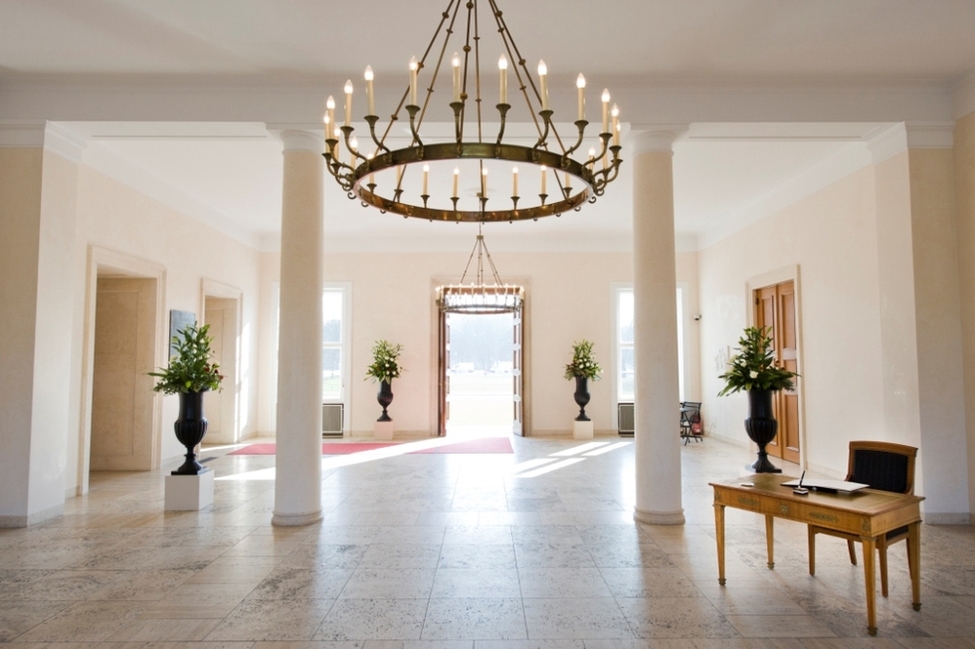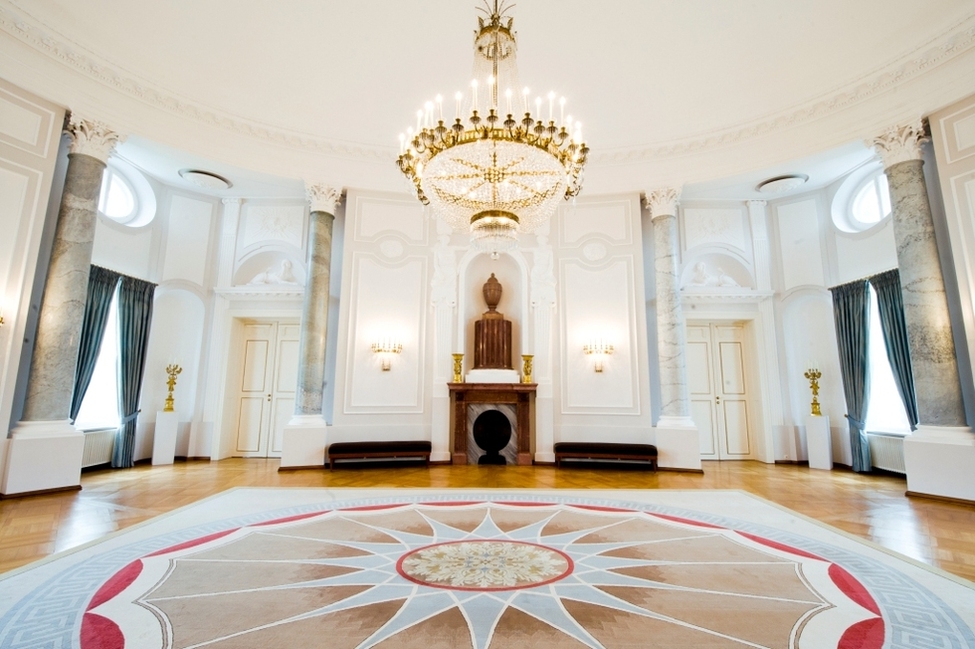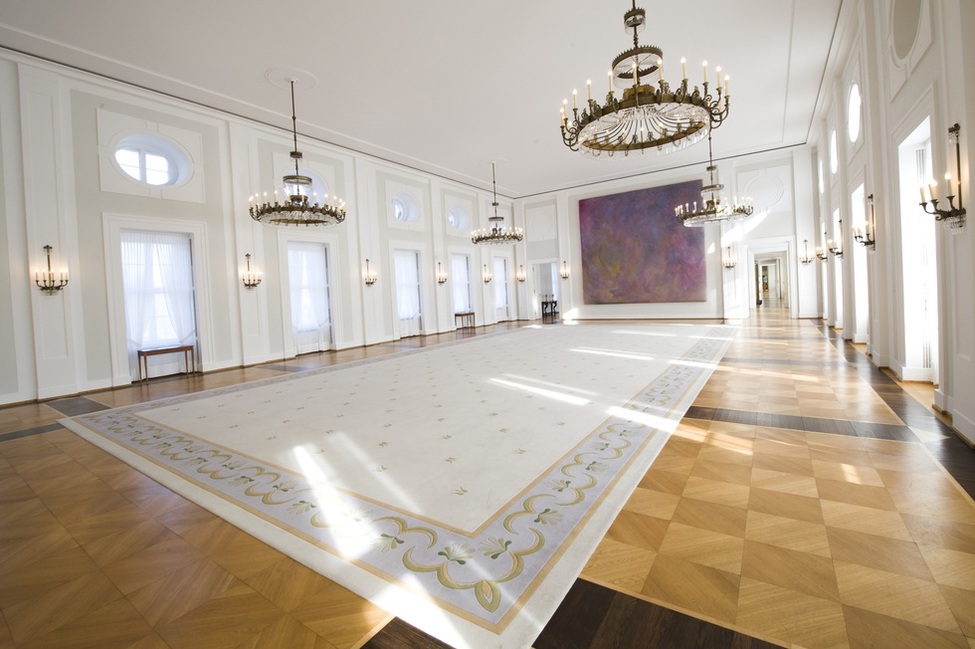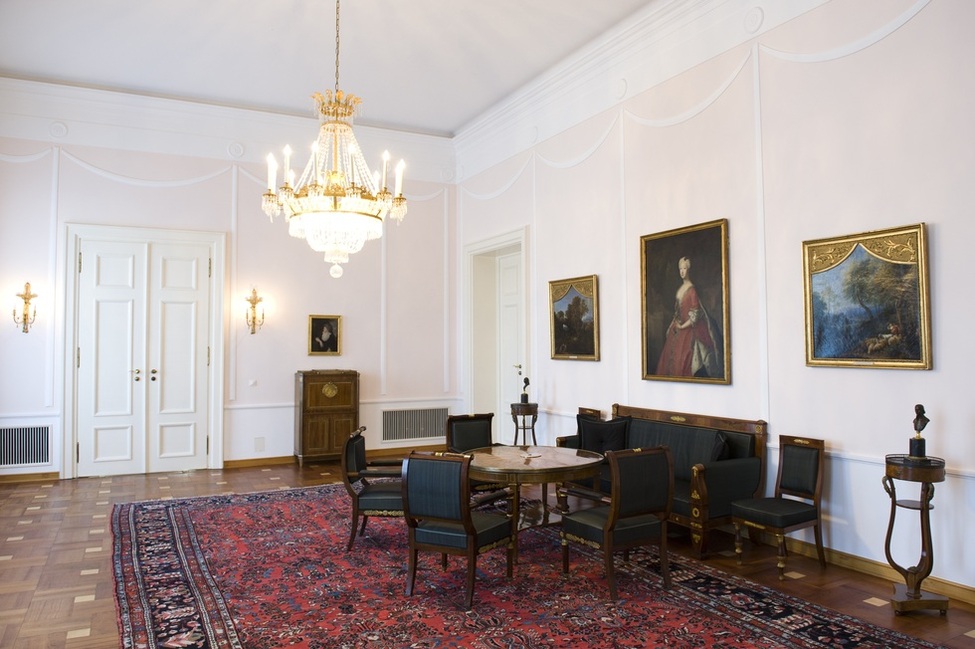Entrance Hall

The Entrance Hall links the interior of the palace with the park. Beside the door to the park, there are portraits of Reich President Friedrich Ebert (1920, Emil Orlik) and Federal President Theodor Heuss (1952, Wolf Röhricht). The plaque commemorating the laying of the foundation stone on 30 April 1785 is the oldest piece in the palace. The visitors book is on display in the Entrance Hall.
The Federal President receives his guests for talks in his office.
Salon I and Salon II

Regulations governing the preservation of monuments dictated that the two salons were renovated in the 1950s style. They thereby reflect the architectural style and furnishings of the time when the palace was first used as an official residence of the Federal President.
Langhans Hall

This is the only room in the palace that was rebuilt after the War in its original form and in the neoclassicist style. The triaxial hall originally served as a ballroom. It stretches to cover the whole depth of the Schloss (14.5 m). In his 1789/90 design Carl Gotthard Langhans gave the room an elliptical form equipping it with eight Corinthian pillars and two fireplaces. Today, receptions and smaller dinners are held here.
Salon Luise and Salon Ferdinand
Salon Luise was named after Princess Anna Elisabeth Luise von Brandenburg-Schwedt who married Prince August Ferdinand in 1755 at the age of 17. The salon is on the garden side of the main building exactly on the central axis. From the central balcony of the garden facade, the view of the visual axes of the palace park stretches out. The receiving line at a state banquet takes place here.
Salon Ferdinand was named after the prince who originally commissioned the building of the palace. It is used for smaller receptions and talks. It houses inter alia a reproduction of the painting by Johann Heinrich Wilhelm Tischbein "Family portrait with Prince Ferdinand of Prussia, Lord Master of the Order of St. John, with his spouse Luise and their children Luise, Heinrich and Louis Ferdinand" (around 1778).
Robert-Blum-Hall

The Robert-Blum-Hall is used as a foyer for the Great Hall but also for smaller receptions and dinners. It was named after the German democratic politician, publicist, poet, publisher, revolutionist and member of the National Assembly Robert Blum (1807–1848). He was executed on 9 November. His death became a symbol for the futility of Germany's 1848 rebellion.
Great Hall

The largest room in the palace is used for large receptions, state banquets, concerts, discussions, ceremonies awarding prizes and decorations and other events. The walls on the north and south side exhibit two large bodies of colour entitled "Begegnungen" (Encounters, 1988) by the artist Gotthard Graubner.


